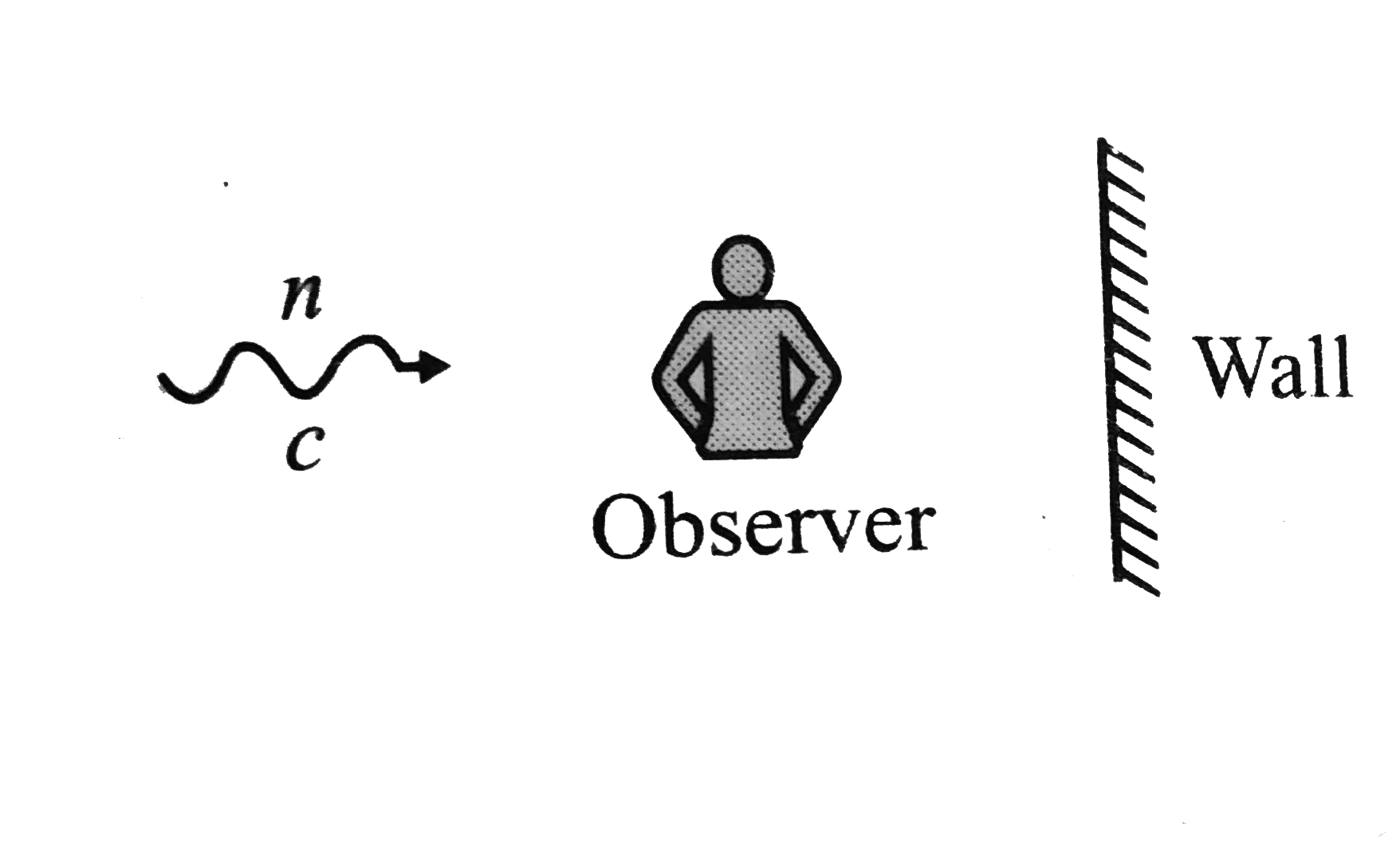The frequency of a source of sound is f. A sound wave from this source is moving horizontally twoards right. The wave is reflected from a large vertical plane moving towards left with a speed v.
The speed of sound in medium is C. Find the
(a) number of waves striking the surface per second.
(b) Wavelength and frequency of reflected wave.
(c) beat frequency.
f = original frequency of source of sound. The speed of sound in medium = C
(a) number of waves encountered by vertical plane per unit time = frequency = f. =
Let the wave is reflected from a vertical plane and is received by an observer at rest.
(b) Let f.. = frequency of wave reflected by plane
Beat frequency = f.. - f
Topper's Solved these Questions
- WAVESBOOK - MODERN PUBLICATIONCHAPTER - WAVESEXERCISE - PRACTICE PROBLEMS
38 Videos
- WAVESBOOK - MODERN PUBLICATIONCHAPTER - WAVESEXERCISE - CONCEPTUAL QUESTIONS
25 Videos
- WAVESBOOK - MODERN PUBLICATIONCHAPTER - WAVESEXERCISE - CHAPTER PRACTICE TEST
14 Videos
- UNITS AND MEASUREMENTBOOK - MODERN PUBLICATIONCHAPTER - UNITS AND MEASUREMENTEXERCISE - CHAPTER PRACTICE TEST
15 Videos
- WORK, ENERGY AND POWER BOOK - MODERN PUBLICATIONCHAPTER - WORK, ENERGY AND POWER EXERCISE - Chapter Practice Test
16 Videos
Similar Questions
A sound wave of frequency f travels horizontally to the right . It is teflected from a larger vertical plane surface moving to left with a speed v. the speed of sound in medium is c
(a) The number of waves striking the surface per second is f(c+υ)c
(b) The wavelength of reflected wave is c(c−υ)f(c+υ)
(c) The frequency of the reflected wave is f((c+υ))(c+υ)
(d) The number of beats heard by a stationary listener to the left of the reflecting surface is υfc−υ
View SolutionA sound wave of frequency f travels horizontally to the right . It is teflected from a larger vertical plane surface moving to left with a speed v. the speed of sound in medium is c
(a) The number of waves striking the surface per second is f(c+υ)c
(b) The wavelength of reflected wave is c(c−υ)f(c+υ)
(c) The frequency of the reflected wave is f((c+υ))(c+υ)
(d) The number of beats heard by a stationary listener to the left of the reflecting surface is υfc−υ
View Solution
Knowledge Check
A sound wave of frequency v travels horizontally to right. It is reflected from a large vvertical plane surface moving to the left with a speed v. The speed of sound in the medium is c, then
Athe frequency of the reflected wave is v(c+v)c−vBthe wavelength of the reflected wave is c(c−v)v(c−v)Cthe number of waves striking the surface per second is v(c−v)cDthe number of beats heard by a stationary listener to the left of the reflecting surface, is ∨c−vA sound wave of frequency f travels horizontally to the right. It is reflected from a large vertical plane surface moving to left with a speed v. The speed of sound in mwdium is C
A(a) The number of wave strinking the surface per second is f(c+vc)B(b) The wavelength of reflected wave is c(c−v)f(c+v)C( c ) The frequency of the reflected wave is f((c+v)(c−v))D(d) The number of beats heard by a stationary listener to the left if the reflecting surface is vfc−vThe frequency , wavelength and speed of a sound wave are related as
Av−vλBλ=uvCv=λvDu=vλ

A sound wave of frequency n travels horizontally to the right with speed with speed c. It is reflected from a broad wall moving to the left with speed v. The number of beats heard by a stationary observer to the left of the wall is
View Solution
A sound wave of frequency n travels horizontally to the right with speed with speed c. It is reflected from a broad wall moving to the left with speed v. The number of beats heard by a stationary observer to the left of the wall is
View SolutionThe frequency of a source is 20 kHz. The frequencies of the sound waves produced by it in water and air will
View SolutionThe frequency of a source is 20 kHz. The frequencies of sound wave produced by it in water and air will be
View Solution
A sound wave of frequency n travels horizontally to the right with speed with speed c. It is reflected from a broad wall moving to the left with speed v. The number of beats heard by a stationary observer to the left of the wall is
View Solution
